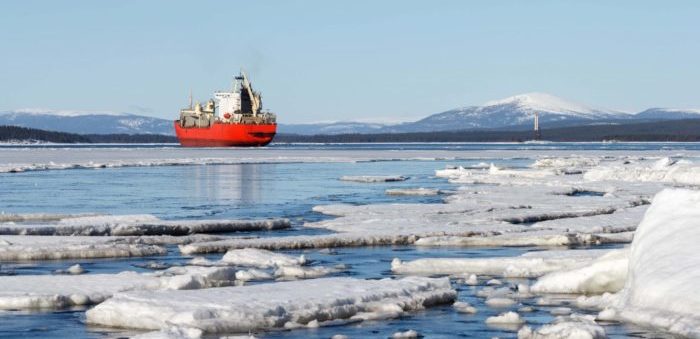During the International Arctic Forum, Evgeniy Ambrosov, SCF Group, referred to challenges concerning the commercial shipping in the Arctic, which continues to grow rapidly and stressed the importance of working with the highest possible standards of environmental safety.
Mr Ambrosov stated that this increase is mainly attributed to the development of industrial and raw materials projects in the Russian Arctic zone. In 2016, there was a significant increase in the historical maximum of traffic in the Northern Sea Route (6.5 million tonnes in 1987). He also predicted that by 2020, this figure may be three times greater.
“In the Arctic, we must use specially designed modern technology and attract highly professional personnel. Additional controls are required to comply with quality and other standards in high latitude navigation.” said Mr Ambrosov, Senior Executive Vice-President of PAO Sovcomflot and Vice Chairman of the Arctic Economic Council.
Evgeniy Ambrosov also addressed a panel session dedicated to energy production in the Arctic region. His report was devoted to effective transport solutions for large oil and gas projects in the region, on the basis of Sovcomflot’s practical experience gained from operating in the area over more than ten years.
In his speech, Mr Ambrosov underlined that Sovcomflot is the leader in oil and gas transportation in severe ice conditions. Out of a fleet of 146 vessels, 74 ships have ice class notation. Meanwhile, 16 vessels are equipped with Azipod thrusters that are used for forward double acting propulsion in difficult ice conditions, and 12 vessels are equipped with dynamic positioning systems.
A report on transport security in the Arctic was presented at the panel session – “The Arctic – Territory of Transport Opportunities” – by Mikhail Suslin, Deputy Head of the Internal Audit Department and Chief Marine Inspector of PAO Sovcomflot. He noted that currently, shipping in the Arctic involves many risks: insufficient hydrographic study of certain areas in the Arctic Ocean; the year-round ice factor; and the need for qualified personnel.
Mr Suslin underlined that, to a large extent, these risks are mitigated by using high ice class vessels and electronic depth charts, interacting with terminals and regulators, and providing special ice training for marine specialists at training centres.
In particular, he talked about Sovcomflot’s training centre (SCF TC) in St. Petersburg, which is equipped with Transas simulators that allow trainees to work with the full range of marine operations in the Arctic.































































